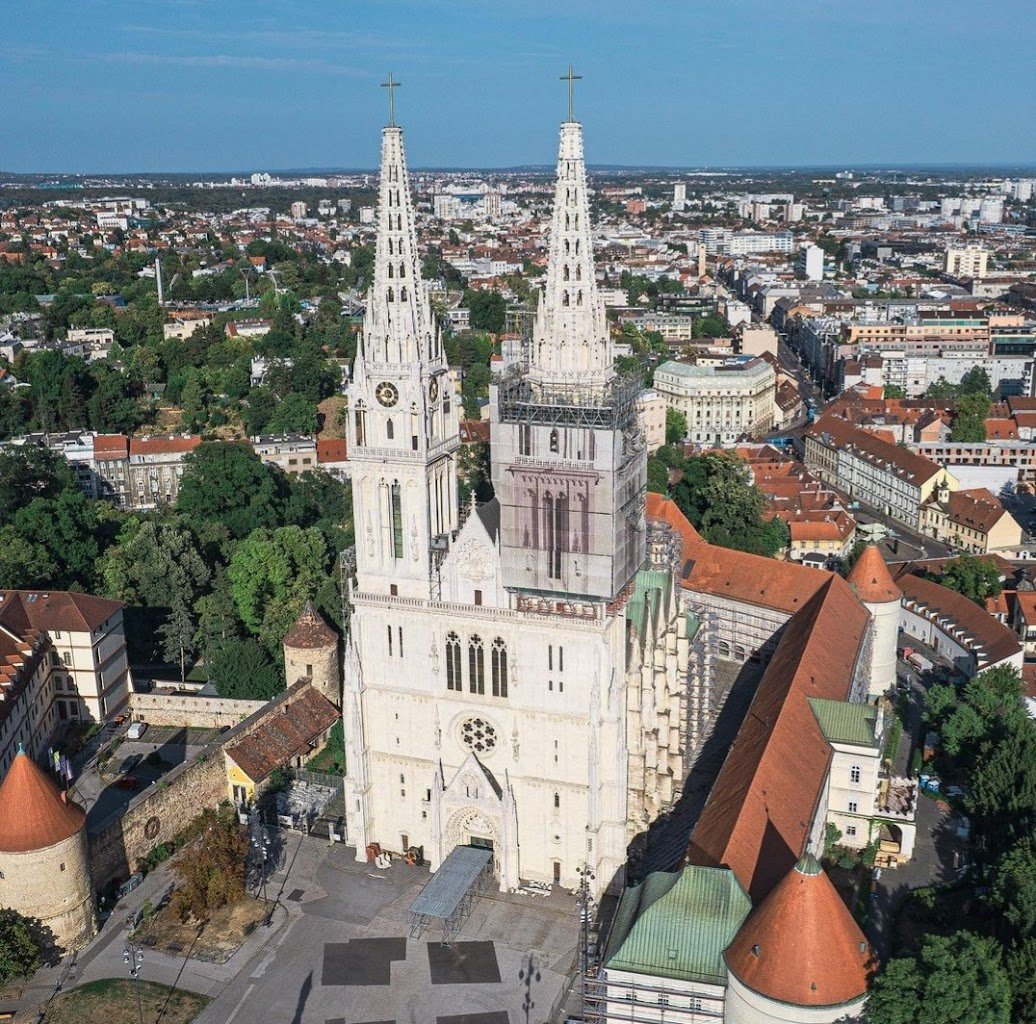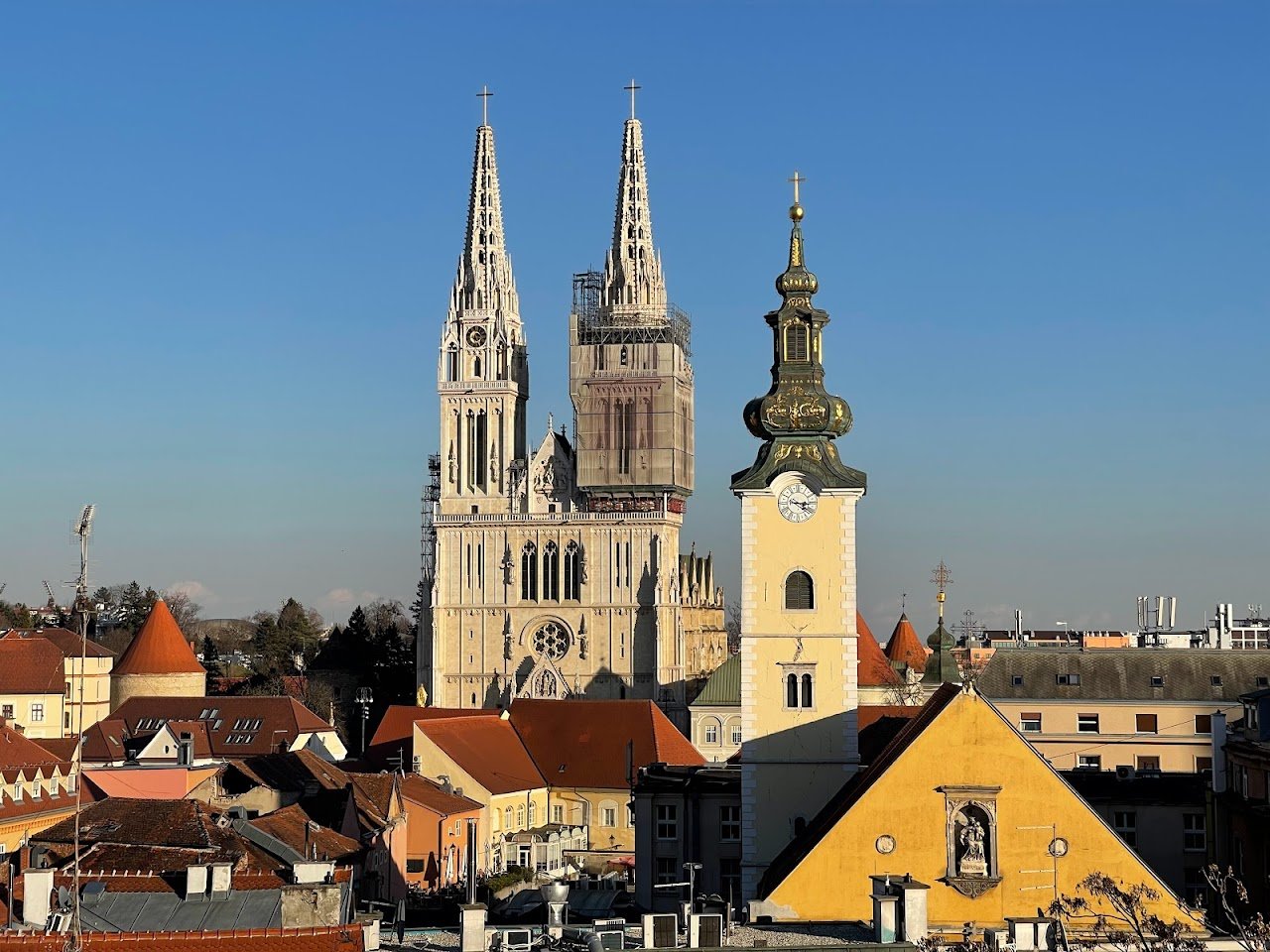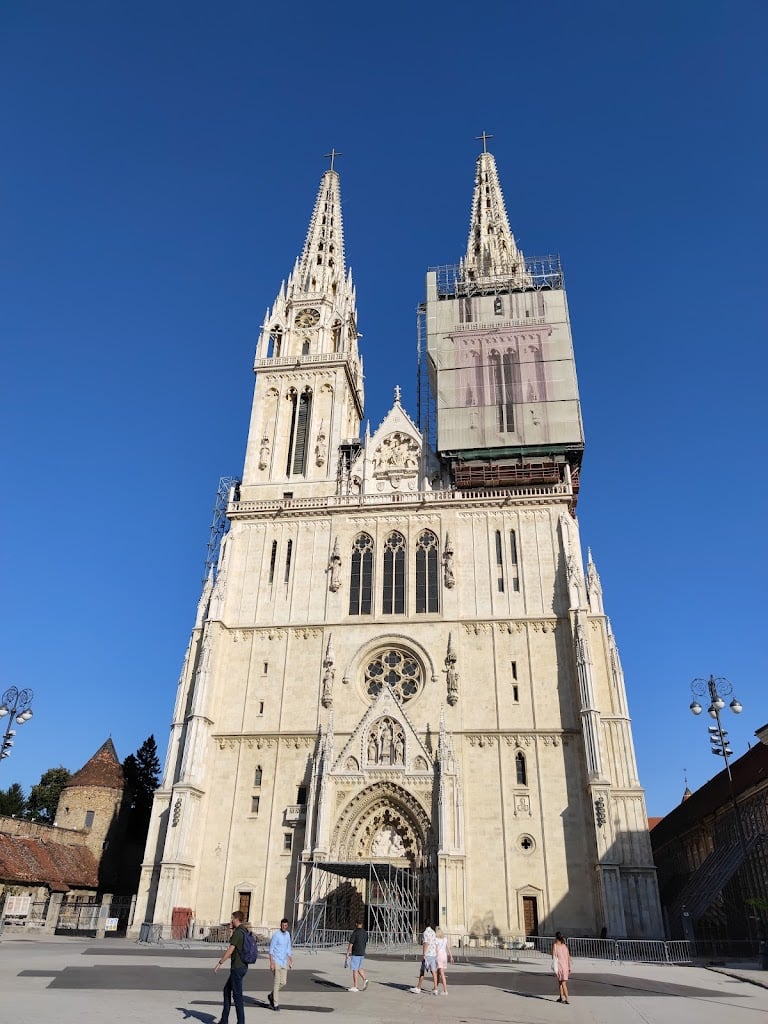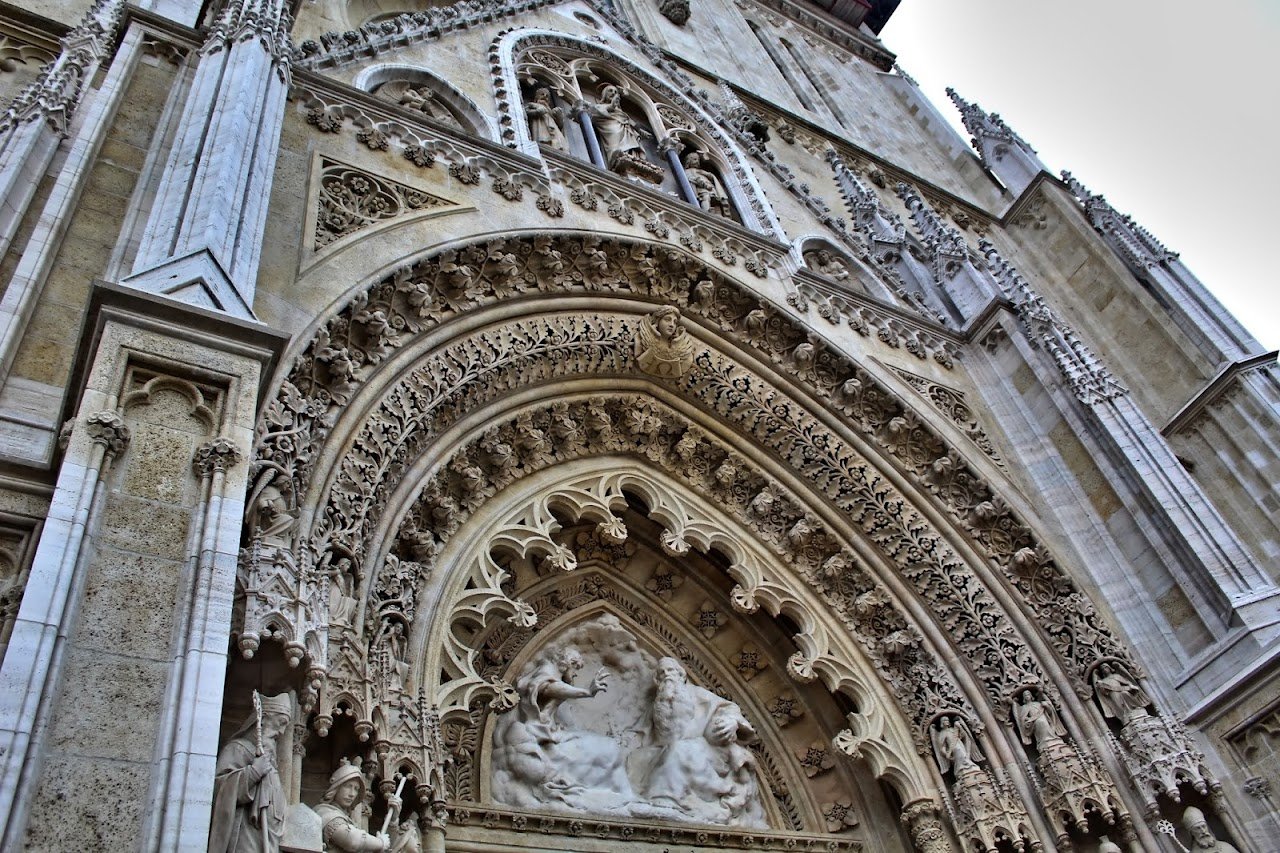Cathedral of Zagreb





Ask ThatchGPT
Suggest a local expert to plan my trip
Suggest an unique itinerary for my Zagreb trip
What foods do Zagreb locals eat
What are some true hidden gems in Zagreb
Help me brainstorm trip ideas for Zagreb
Help me plan a family-friendly trip to Zagreb
What people say
Pedro Pereira
Available for hire
"Zagreb Cathedral, located in the Kaptol district of Croatia's capital, is a Roman Catholic church dedicated to the Assumption of Mary, Saints Stephen, and Ladislaus of Hungary. It is the tallest building in Croatia and the most monumental Gothic sacred structure southeast of the Alps. The cathedral, originally established in 1093, showcases typical Gothic architecture, including its highly valued sacristy. Major reconstruction was needed after an 1880 earthquake, which saw the redesign of its facade by Austrian architect Hermann Bollé and the addition of its notable 105-meter-tall bell towers.
The cathedral's history dates back to 1093 when the first stone was laid. By 1094, King Ladislaus had founded the Archdiocese of Zagreb and constructed a simple Romanesque church, which was later expanded. The structure faced numerous challenges, including destruction by fire during the 1242 Tatar invasion and further damage during the late 14th and early 15th centuries. Reconstruction efforts included significant Gothic additions and renovations, notably by Bishop Eberhard and subsequent bishops, who engaged renowned European artisans and responded to further destruction by fire and military attacks.
In the mid-16th century, the cathedral was rebuilt in Gothic style, with new decorative elements added by Bishop Osvald Thuz. The 19th century saw extensive renovations under architect Hermann Bollé after an 1880 earthquake severely damaged the building. Bollé’s work, completed by 1902, integrated the interior more cohesively and minimized the clutter from previous renovations. The cathedral’s grandeur was highlighted when the wooden scaffolding was removed, revealing its impressive size and beauty, enhanced by the sound of its bells resonating throughout the city."
Read more in:
Petra Hus
Available for hire
"The Cathedral of Zagreb (Cathedral of the Assumption of the Blessed Virgin Mary) is the tallest and most monumental church in Croatia, located in the heart of the city. Originally built in the 11th century, the cathedral has undergone numerous reconstructions due to invasions and natural disasters, including the 1880 earthquake that led to its neo-Gothic restoration. Its soaring twin spires are a symbol of Zagreb's skyline. Inside, the cathedral houses beautiful altars, frescoes, and tombs of significant Croatian figures. Currently, the cathedral is undergoing repairs following damage from the 2020 earthquake, but it remains a key religious and historical site.
The Cathedral of Zagreb is primarily built from limestone, sourced from quarries near the city. This local limestone, known for its light color and durability, was favored for its aesthetic appeal and ease of carving, making it ideal for intricate Gothic details. Over time, due to weathering and pollution, sections of the cathedral have undergone restoration using a combination of the original limestone and more modern materials to preserve its structure. The limestone gives the cathedral its distinctive bright appearance, making it a striking landmark in Zagreb's skyline."
Read more in:
Valentina Vanegas
"Croatia's tallest building and an architectural masterpiece. The twin spires dominate the skyline, and the intricate Neo-Gothic facade is stunning. Inside, admire the vibrant stained-glass windows and the ornately carved pulpit. Learn about the cathedral’s restoration journey following the 2020 earthquake."
Mentioned in these guides
About Cathedral of Zagreb
Get the inside scoop on Cathedral of Zagreb from local experts, travel creators, and tastemakers. Browse genuine trip notes, Cathedral of Zagreb reviews, photos, travel guides, and itineraries from real travelers and plan your trip with confidence.
Save this spot for later or start mapping out a new trip today
Try our AI Travel Assistant and get instant answers to any questions about your trip.
Ask ThatchGPT


